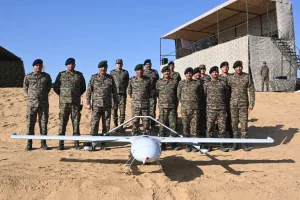Trigonometry is an essential part of the mathematics syllabus for competitive exams like the Combined Defence Services (CDS) and Air Force Common Admission Test (AFCAT). A recent class dedicated to this topic focused on key concepts such as heights and distances, line of sight, angle of elevation and depression, and the sine and cosine formulas. Additionally, the class included extensive practice with multiple-choice questions (MCQs) to help reinforce these concepts. This article highlights the main areas discussed, providing a comprehensive understanding to aid students in their exam preparation.
Key Topics in Trigonometry: Heights and Distances
Understanding the practical applications of trigonometry in solving problems related to heights and distances is crucial for competitive exams. The main topics covered in the class include:
- Line of Sight
- Angle of Elevation and Depression
Mastering these concepts enables students to tackle a variety of problems related to trigonometry efficiently.
Line of Sight
The line of sight is the straight line along which an observer looks at an object. It forms the basis for measuring angles of elevation and depression.
Angle of Elevation and Depression
The angle of elevation is the angle between the horizontal line and the line of sight when looking up at an object. Conversely, the angle of depression is the angle between the horizontal line and the line of sight when looking down at an object.
Sine Formula
The sine formula is used to relate the sides of a triangle to the sine of its angles. This is particularly useful in non-right-angled triangles.
Cosine Formula
The cosine formula relates the lengths of the sides of a triangle to the cosine of one of its angles. It is useful in solving problems involving non-right-angled triangles.
Example MCQs and Solutions
To enhance understanding and application of these concepts, the class discussed several example MCQs. Here are some examples along with their solutions:
Example 1: Angle of Elevation
Question: A person standing 50 meters away from a building observes the top of the building at an angle of elevation of 45 degrees. What is the height of the building?
Solution: The height can be found using the tangent function (tangent of 45 degrees is 1).
Answer: Height of the building is 50 meters.
Example 2: Angle of Depression
Question: From the top of a 60-meter-high tower, the angle of depression to a point on the ground is 30 degrees. What is the horizontal distance from the tower to the point?
Solution: The distance can be found using the tangent function (tangent of 30 degrees).
Answer: Horizontal distance is approximately 103.92 meters.
Example 3: Sine Formula
Question: In a triangle, if one side is 8 units, the opposite angle is 30 degrees, and the hypotenuse is 16 units, is this consistent with the sine formula?
Solution: Verify using the sine formula.
Answer: Yes, it is consistent.
Strategies for Solving Trigonometry Problems
- Understand the Problem: Carefully read the question to identify which trigonometric concept or formula to use.
- Draw a Diagram: Visual representation of the problem often helps in understanding and solving it.
- Memorize Key Formulas: Ensure you remember the key trigonometric formulas and identities.
- Practice Regularly: Regular practice helps in reinforcing concepts and improving problem-solving speed.
- Double-Check Calculations: Always verify your calculations to avoid simple errors.
Conclusion
Trigonometry, particularly the concepts of heights and distances, line of sight, angles of elevation and depression, and the sine and cosine formulas, is a vital topic for the CDS and AFCAT exams. The recent class provided a comprehensive overview of these key areas, along with extensive practice of important MCQs to reinforce understanding.
Stay focused, keep practicing, and approach each problem with confidence. Good luck!



















